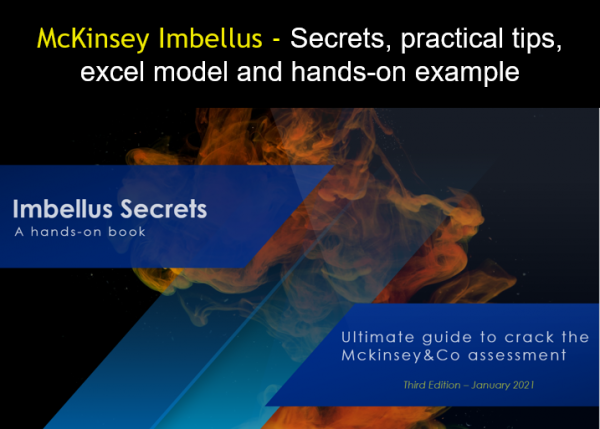Hi,
I am not completely sure whether you are talking about the general calculations or a market sizing quant problem.
If it is the general math, you follow these steps:
- Take a minute to think about the problem
- Provide the formula / your approach to calculations / equation
- Check with the interviewer whether it's correct
- Continue calculations, coming back to the interviewer with some intermediate numbers
- Come up with a final number and check it with the interviewer.
If it is a market sizing problem, there are several things you should know:
1) First of all, there are two ways to calculate market size:
- From supply side (e.g. vending machines spots)
- From demand side (e.g. vending products consumption)
2) There are 2 ways to structure market sizing:
- Formula - basically a math formula to come up with a solution. The problem with the formula is that it is easy to forget something or get lost.
- Tree - same as with regular cases you build a tree. A very simple example: you need to calculate the number of dogs on manhattan. A number of dogs = share of households having a dog * # of households. # of households = population / average household size. In the end, you'll have a pyramid where you have to fill the numbers on the base of the pyramid. This approach is much easier and help you track all the numbers
3) You should use the key market sizing techniques:
- Making assumptions based on personal experiences (Use the example of your house where out of 100 apt-s 10 have dogs)
- Adjusting numbers (NY is a busy city thus fewer people have dogs)
- Sanity check - try to apply your calculations to real environment
- etc.
4) You should learn and use the key tools:
- Using age even age split (suppose life expectancy is 80 years. Assuming even age split we have 4 mln people in US of each age group)
- Using 80/20 split (suppose 20% people earn 80% wealth and the average salary is xx...)
- Using approximations (Length of NY-SF flight and plane speed to calculate US length)
- etc.
5) Learn and use the key numbers: populations, gas price, gas consumption, Boeing speed and nmber of seats, average salary, # of gates in the airport, GDP growth rate, inflation, etc.
Good Luck!











